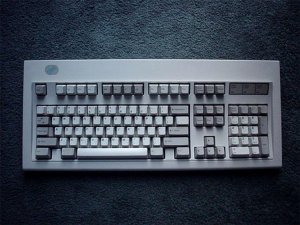 readme:
readme:
Oh good, it’s still April, so I’m not really late.
First of all, thanks to all the wonderful readers who either subscribed or just hit that little “Donate” button (over there on the left) last month. Your contributions have been an enormous help. Special thanks of the highest order to Susan in California, whose extraordinary generosity is deeply appreciated.
Elsewhere in the news, I have disabled the text-to-speech feature (The Word Detective Read Aloud by a Very Stupid Robot) because it was annoying everybody and didn’t really work. Incidentally, speaking as a former longtime member of the Authors Guild, I think their objection to the speech feature on the new Kindle was seriously idiotic. Trust me, readers can tell the difference between a book read aloud by the author (or an actor) and a book squawked out by a toaster. And don’t get me started on the Guild and their end run around US copyright law with Google. Don’t be evil? Ha. As a corporate motto, it’s brilliant. Gives you a five-mile head start on all the schlubs who believe you.
Onward. I believe I may have mentioned at various points that I have a bit of a thing about computer keyboards. For many years I’ve been devoted to the IBM Model M “clicky” buckling spring keyboard that came with a used IBM PS-2 computer I bought back in 1992. Typing on one of these boards is like using a good electric typewriter, which makes sense since IBM engineers were trying to duplicate the feel of the legendary IBM  Selectric typewriters. There is absolutely no comparison between typing on a Model M and poking away at the kind of cheap, mushy “membrane” boards that come with computers today. I don’t touch-type, but people who do say that when using the Model M their typing rate and accuracy increase dramatically. The feel of the keys is deliciously, smoothly mechanical in the way that a fine camera is — the Model M is the keyboard equivalent of the original Nikon F, or perhaps even an M-Series Leica (but at a tiny fraction of a Leica’s cost). If you are familiar with vintage shortwave radios (of course you are!), the Model M is the Yaesu FRG-7 of keyboards.
Selectric typewriters. There is absolutely no comparison between typing on a Model M and poking away at the kind of cheap, mushy “membrane” boards that come with computers today. I don’t touch-type, but people who do say that when using the Model M their typing rate and accuracy increase dramatically. The feel of the keys is deliciously, smoothly mechanical in the way that a fine camera is — the Model M is the keyboard equivalent of the original Nikon F, or perhaps even an M-Series Leica (but at a tiny fraction of a Leica’s cost). If you are familiar with vintage shortwave radios (of course you are!), the Model M is the Yaesu FRG-7 of keyboards.
Still, my trusty Model M board dated back to the 1980s, and even though Model Ms are nearly indestructible, it bothered me to know that someday, possibly before the Sun burned out, I was going to need another keyboard. So it was nice to discover that a small company called Unicomp, in Kentucky, had bought the patents, dies and spare parts for making Model M boards from Lexmark, which had been spun off by IBM itself many years earlier. NPR recently did a nice feature on Unicomp, which can be heard here.
Below is a picture of Inky with the Customizer 101 I bought from Unicomp about five years ago. It’s identical to an IBM Model M, although IBM never made one in that color scheme. You’ll notice that it lacks the “Windows” keys found on cheapo “modern” plastic keyboards. That’s a good thing. If you really use those keys, it’s easy to remap them to, say, the right Alt key, which no human being has ever used.

Anyway, since that time, I’ve learned a lot about keyboards, and acquired a few more (most of which cost less than $10, making a keyboard fixation a very cheap hobby). At one point last year I stumbled across a site called geekhack.org which, despite its name, is actually full of very nice people who happen to be obsessed with mechanical keyboards. If you’ve ever hankered for a rousing debate over the merits of black Alps switches versus the blue Cherry variety, Geekhack is your new home.
But while I appreciate other kinds of mechanical switch keyboards and I’m glad Unicomp is still making the “new” Model Ms, I remain loyal to the original, made-by-IBM boards (part number 1391401, to be precise). They just feel sturdier, and I like the idea of typing on a 20-year old keyboard. You can, of course, buy them on eBay, usually for between $20-40, but it pays to be picky. This guy sells them along with a lot of other classic keyboards, and while his prices are slightly higher than some other sellers, he takes the boards apart and meticulously cleans and tunes them before sale. I have no idea of who he is (nor he me), but I have bought things from him, and he seems very solid.
But I digress. As usual, there are a few anachronisms buried in this batch of columns, mostly references to last year’s US elections, and, as usual, you can avoid that sort of jarring “what month is this” feeling by simply subscribing, which will put all this foo-frah on your digital doorstep months earlier.
And now, on with the show….




“[…] the right Alt key, which no human being has ever used.”
Actually, the right Alt key is important on many non-US keyboards, where it is used to generate characters which are common in other languages but not found in the standard US keyboard layout. See for example the Wikipedia article on this “AltGr” key at http://en.wikipedia.org/wiki/AltGr_key and also the article on keyboard layouts. IBM has a page with images of all the keyboard layouts it has offered at http://www-01.ibm.com/software/globalization/topics/keyboards/registry_index.jsp (I have had to deal with various international keyboards in a recent work assignment, so these pages in particular have been helpful to me.)
I have a model M 1999 UK built #42H1292…but the alt keys on it don’t work…they press down fine, and seem to work, but they don’t perform the intended function onscreen…they’re essentially disabled or dead…can this be easily fixed…any suggestions as to how?
many thanks,
bar
I don’t know the answer. I think almost anything on an M can be fixed. You should probably ask your question at geekhack.org — there are folks there who have experience repairing keyboards. It’s possible that the keys are just not properly seated. If it’s something more complicated (e.g., the logic board gone bad) I think you could also get Unicomp (linked in my article) to fix it, but if you’re in the UK it would, given the postage, probably be cheaper to buy a new Model M.
“the right Alt key, which no human being has ever used”
You are right and you are wrong. The right Alt key is generally useless, but when navigating websites, I regularly use the keyboard combinations [Alt]+[](those are meant to be the arrow keys) as they are shortcuts for “back” and “forward”. Since the right Alt key is nearer the arrows, I can use the right Alt key and the arrows with a single hand. And I am a sucker for keyboard shortcuts – especially those that can be executed with a single hand.
That said, my loved ones insist that I am not entirely human.
True — but I use two hands and use the left Alt key. I agree that keyboard shortcuts are the great secret of all operating systems. I use the mouse only when absolutely necessary and thus have none of the aches and pains of my mouse-centric friends.
I so understand, in last paragraph just whole salt and is stated
hey, do you have any tips for giving your keyboard a good cleaning? The compressed air only goes so far. Took is apart once but that was a bit of a disaster.
I’d say about 30% of this dinovo is my dna.
to clean your keyboard you could use cotton buds and surgical spirit (only a tiny bit of fluid – use sparingly), this is good for getting the grime and dirt out that air will not shift. i find a great pleasure in getting the keys clean although it can be a long task and defo a bit geekish.